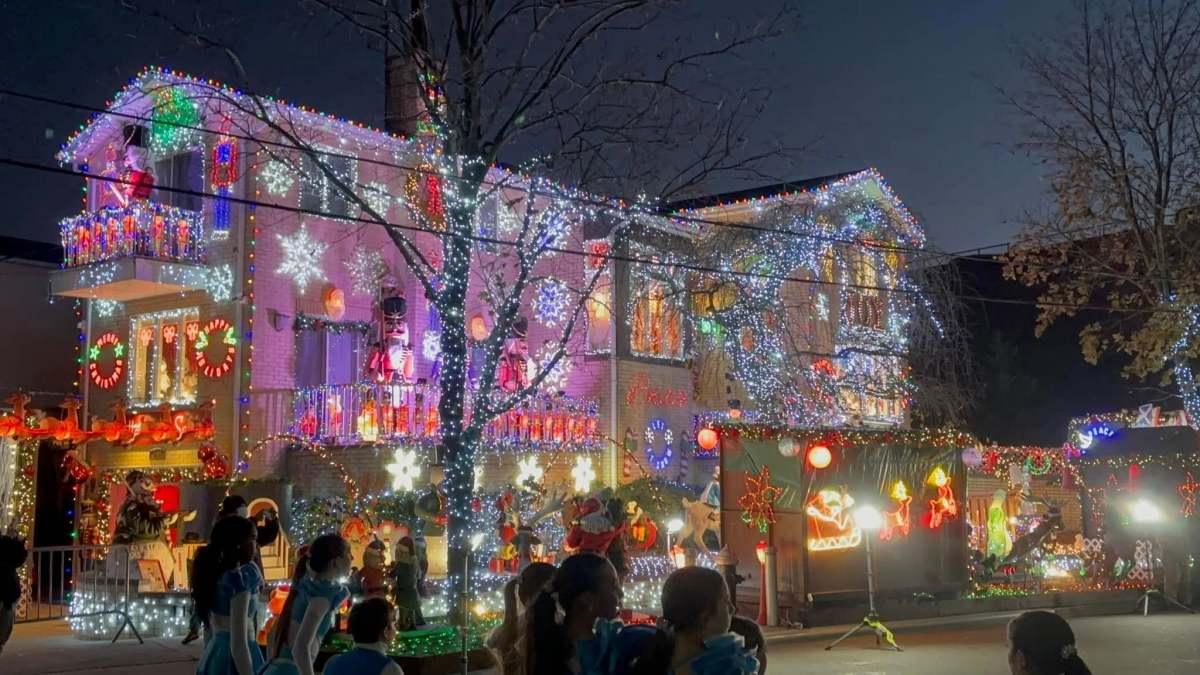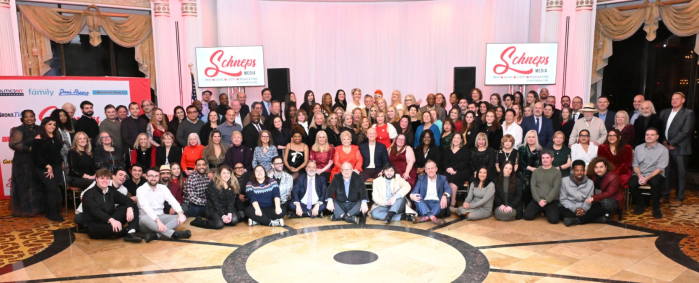
At C.B. 1’s Battery Park City Committee meeting on Nov. 4, Robbie Martino, 17, a student at Millennium High School, read a plea to the committee to urge the B.P.C. Authority to keep the Stuyvesant High School Community Center open.
BY TERESE LOEB KREUZER | The day that Community Board 1’s Battery Park City Committee met to discuss the fate of the Stuyvesant High School Community Center, New York State Assembly Speaker Sheldon Silver was on the phone with Battery Park City Authority Chairperson Dennis Mehiel to talk about that very matter.
“The Speaker made very clear that he wants this facility, which we worked very hard on for this community, to continue to operate in some way, shape or form,” said Silver’s district office director, Paul Goldstein, at the Nov. 4 C.B. 1 meeting, which was held at the Asphalt Green community center.
Toward the end of September, the B.P.C.A., which runs the Stuyvesant Community Center, notified members that the center at 345 Chambers St. would close in December after a 20-year run.
The B.P.C.A. cited “the recent rise in the number of health and fitness center choices in the immediate area, combined with steadily declining membership” as the reason.
Not so fast, said Silver and several other elected officials including City Councilmember Margaret Chin and Assemblymember Deborah Glick.
In a letter to Robert Serpico, acting president of the Authority, Chin cited the “severe lack of recreational space” in the community as a reason to oppose the closing.
“I also believe the B.P.C.A. has a binding commitment to provide a community benefit at the Stuyvesant High School space,” Chin wrote.
This “binding commitment” dates back to 1987, Goldstein told the C.B. 1 committee. In exchange for putting Stuyvesant High School in Battery Park City, the community board and elected officials negotiated with the Board of Estimate (the City’s governing body that preceded the establishment of the current City Council), to make the facility available to the community from Monday to Friday, 7 p.m. to 10 p.m., and for eight hours a day on weekends.
Anne Fenton, who represented the Battery Park City Authority at the C.B. 1 meeting, said that the B.P.C.A. was losing $200,000 a year on the facility. Also, she said, the B.P.C.A. had made a major investment in the Asphalt Green community center.
Committee members objected that that was irrelevant in the face of a binding agreement. They also noted the huge difference in price between the two facilities.
Among those who attended the Nov. 4 C.B. 1 meeting were teenagers who believe the Stuyvesant High School Community Center is of vital importance. Robbie Martino, 17, a Millennium High School student who said that he and his peers have all played sports at the Community Center, read a statement on their behalf.
“We ask that you don’t forget about us,” Martino said. “You, as a community, have worked so hard to provide for us in our younger years. Please don’t turn your back on us now. We understand that this new and beautiful athletic facility where we are does exist, and sure, some of my friends and their families do have a membership and I often see them and their parents on the treadmills or around the basketball court. But this facility, as wonderful as it is, is not for everyone. It isn’t for many families and many teenagers who can’t afford it. For them, for us, we are just outsiders looking in. We are not outsiders in our own community and never will be. Downtown Manhattan is our home. Please find a way to keep the Stuyvesant High School Community Center open for this group.”
His remarks were followed by applause.
In the committee’s discussion about the wording of a resolution to go to C.B. 1’s full board for approval, Bob Townley, executive director of Manhattan Youth, said that it was essential that the Stuyvesant High School Community Center not only stay open, but that it continue to be affordable.
“It is ludicrous to think that because the Battery Park City Authority is losing $200,000 a year, that they have to close this amenity,” he said.
Tom Goodkind, a member of the Battery Park City Committee who participated in the negotiations that ended with Asphalt Green being selected to run a community center in Battery Park City, said that he and others who arranged that deal had been mistaken.
“We all thought that this would be an affordable community center,” he said of the Asphalt Green facility. “It is not. We didn’t know that when we voted this in. And that, to me, is a kick in the teeth.”
Referring to the students and to others who can’t afford Asphalt Green, he said that it would be great if they could use the center “instead of watching people through the window and saying, ‘I guess I’m not a part of that community.’ This community is low income, middle income and upper income…If they want to cut [the Stuyvesant Community Center] down, then price something in so this gang could come here. [Asphalt Green] was supposed to be a community center. Make it a community center.”
The committee approved a resolution that will go before the full board on Nov. 21, calling on the B.P.C.A. to continue operating the Stuyvesant High School Community Center at an affordable price as required by the legally binding agreement.
In the discussion that preceded the vote, Mark Costello, a lawyer and former head of the Downtown Little League, said that the repercussions of breaking this agreement would go far beyond the Stuyvesant Community Center.
“The set of documents that require the Authority to continue to operate this [center] are the strongest documents we’ve ever gotten in 25 years,” he said. “Similar agreements govern our dog run. They govern some aspects of our schools. If this agreement can be washed away, nothing is sacred. So in some ways, this battle goes beyond even keeping the community center open. It goes to whether we can negotiate agreements that bind. And if you can’t, then I think this place changes in fundamental ways. I think we have to hold the line here.”



































